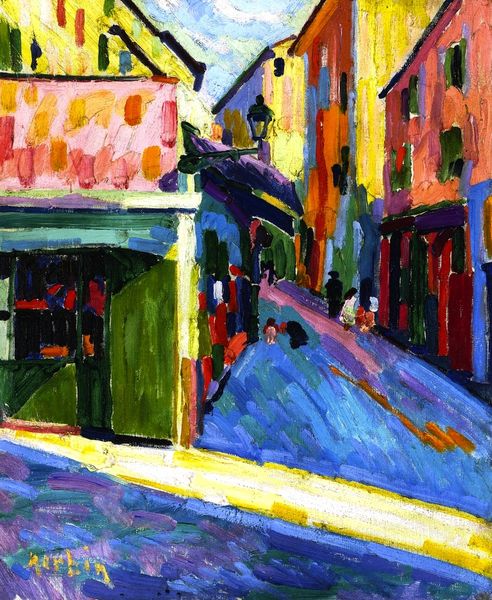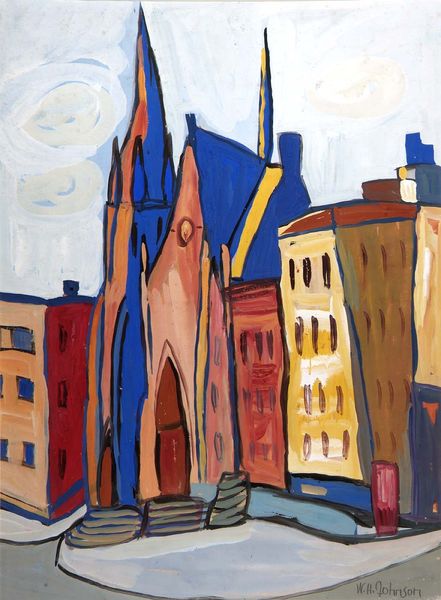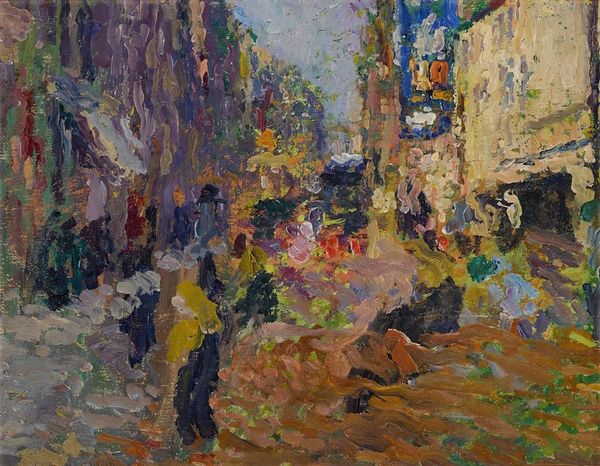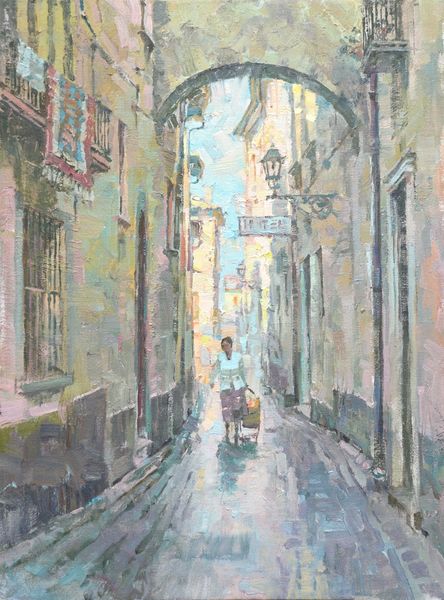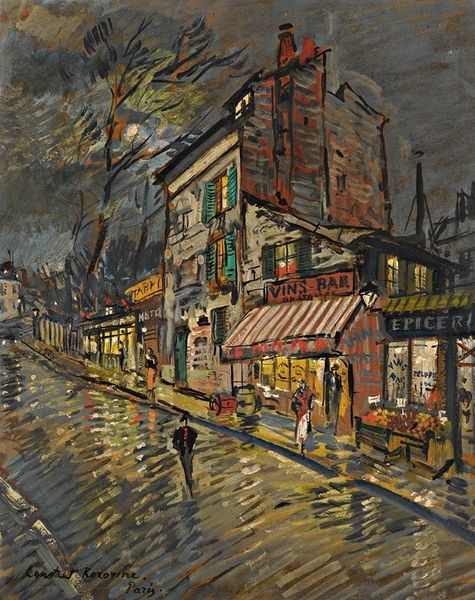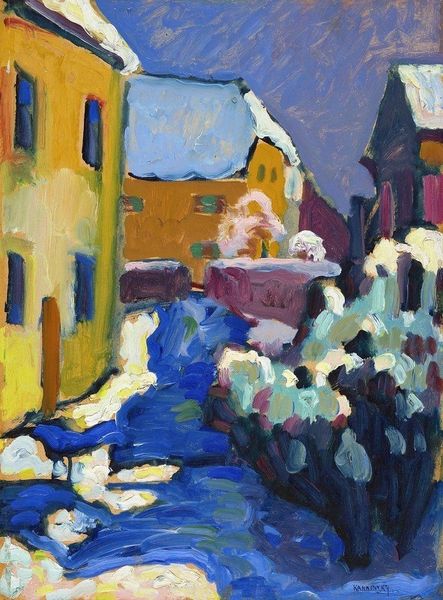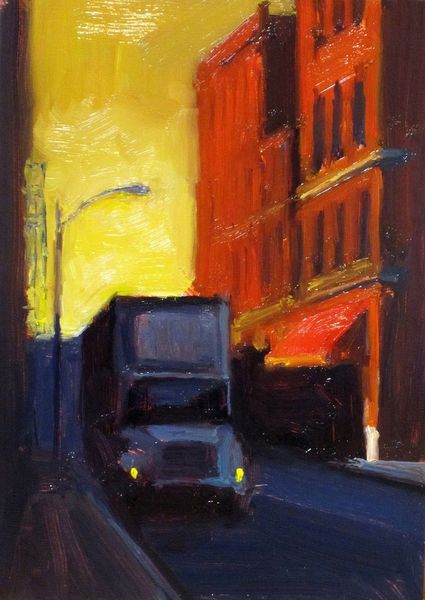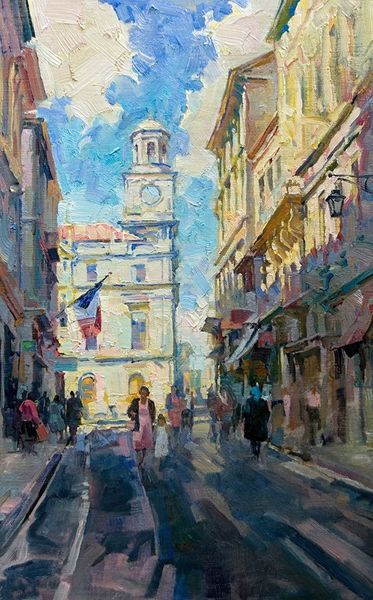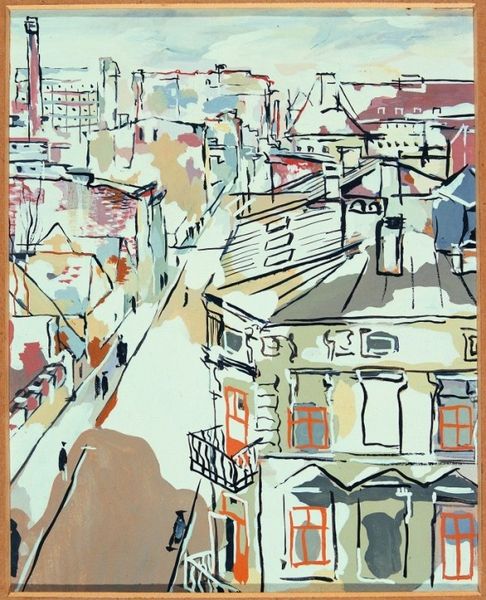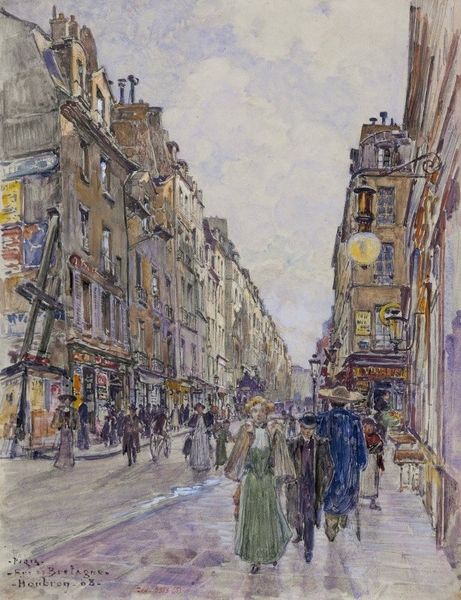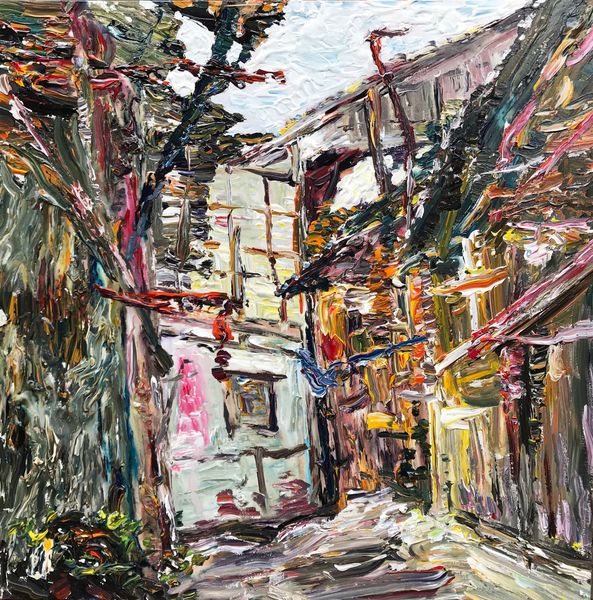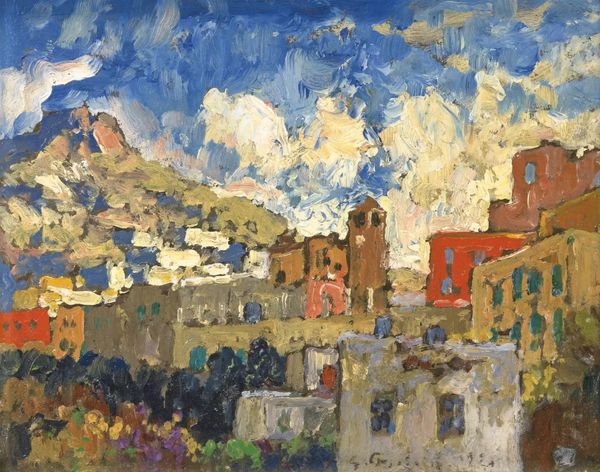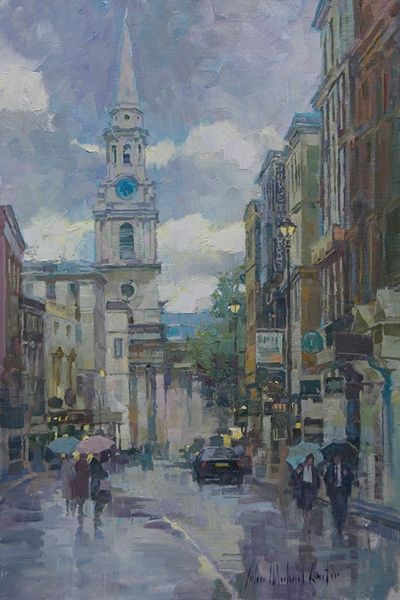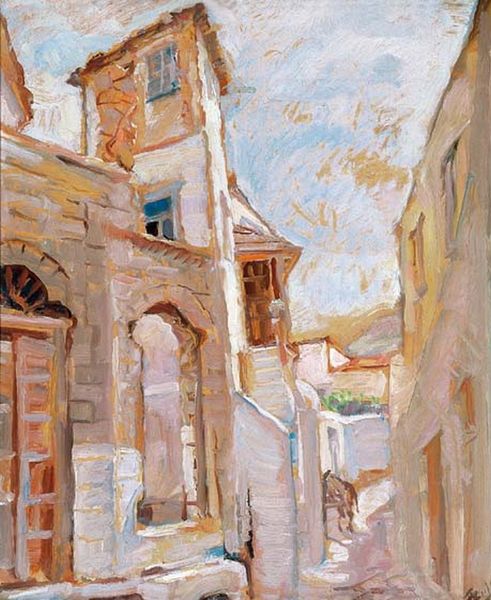
Copyright: Public domain US
Editor: Here we have Auguste Herbin’s “The Place Maubert in Paris,” painted in 1907. The colours are so vibrant, almost aggressively cheerful. It feels… theatrical, somehow. What do you see in this piece? Curator: I see a deliberate construction of place using symbolic colour. Note how the spire, that clear visual marker of faith and community, pierces the sky – painted in an almost defiant pink. Herbin isn’t simply depicting Paris; he’s invoking its spirit through colour. Editor: Defiant? Is that Fauvist influence? Curator: Precisely! Fauvism aimed to liberate colour from its descriptive role. Herbin uses colour to evoke emotional and psychological resonances of Paris. The street becomes a stage, bathed in the symbolic colours of the avant-garde. Editor: The woman in the foreground – does she fit into that? She looks kind of solitary. Curator: Perhaps she’s an emblem of the individual within the city's broader narrative. The painting, therefore, reflects a psychological portrait, not just a physical one. It explores the interplay between personal experience and collective identity. Editor: So the city *itself* is a kind of symbol, built out of more symbols? That’s… intense. Curator: Cities are layered with memory, coded in every brick and painted surface. Herbin shows how a painter grapples with those layers. We see him reveal how emotional meanings shape our perception of place. Editor: I never considered how a landscape could work like that. I'm rethinking how artists interpret public memory through a single snapshot! Curator: Absolutely, it goes to show how one image can reveal multiple layers of personal and collective narratives.
Comments
No comments
Be the first to comment and join the conversation on the ultimate creative platform.
